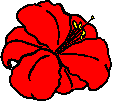|
| Orders: 1-866-449-3344 Toll-free |
|
| International: ++1-317-867-3344 |
 Shields
Gardens
Ltd.
Shields
Gardens
Ltd.| Home |
| Daylilies |
| Rare Bulbs |
| Clivia |
| Seed Sales |
| E-Mail and Chat |
| Photo Gallery |
| Information |
| Sources |
| Guest Sites |
| Societies and Clubs |
| Links |
| People |
| About Us |
It seems that young clivia seedlings sometimes stop growing abruptly at about the two-leaf stage. There might be any of several reasons for this, and there may be some was to counteracts a few of them. Two possible causes come to my mind immediately: Disease, and dormancy.
If the clivia seedlings in question have been kept continuously damp, to push them to faster growth, there is always the possibility that some form of rot may enter. There is a page in this section on this type of problem: CLICK HERE
Another possible cause for slowing of growth in an otherwise apparently healthy seedling is that some environmental condition has caused the plant to think it needs to go into a dormant state. Here, "dormant" means simply physiologocally quiescent, not actively growing. It should not be taken to suggest shedding of the leaves, for instance. Losing leaves would indicate a pathological condition, not dormancy.
Conditions that might induce dormancy in what should be a very actively growing young Clivia seedlings could include excessive dryness or excessively cool temperatures. Other forms of stress could also conceivably cause the plants to go into a state of physiological inactivity.
These are simply guesses. Anyone with experience in handling such arrested seedlings is asked to contact me: <jim@shieldsgardens.com>
First of course, if a disease condition is suspected, the plant should be treated. Remove from the growing mixture, wash well and possibly sterilize with dilute hydrogen peroxide solution (see: Diseases and Pests). Let dry in air for a day or two. Then treat as for a dormant seedling.
A dormant or resting seedling, apparently completely healthy except for having stopped growing for a considerable time, needs to be re-started. As for a diseases plant being rescued, the resting seedling will be susceptible to disease if merely kept wet and warm. My preferred treatment for encouraging growth is as follows:
Unfortunately I cannot guarantee results. The condition can also be a consequence of genetic abnormalities in the seedling. There will be no way to rescue a plant is such cases.
Jim Shields
|
| Orders: 1-866-449-3344 Toll-free |
|
| International: ++1-317-867-3344 |
For information about this account, contact:
James E. Shields, <jim@shieldsgardens.com>, webmaster
Last revised: 4 February 2004
© Copyright 2004 by SHIELDS GARDENS LTD. All rights reserved.